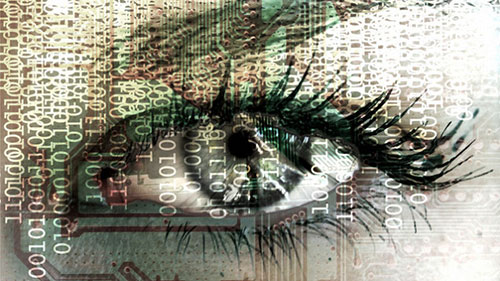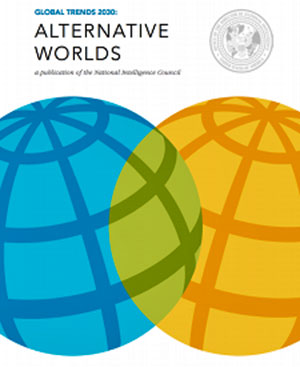The National Intelligence Council (NIC) has just released its much anticipated forecasting report, a 140-page document that outlines major trends and technological developments we should expect in the next 20 years.
Among their many predictions, the NIC foresees the end of U.S. global dominance, the rising power of individuals against states, a growing middle class that will increasingly challenge governments, and ongoing shortages in water, food and energy.
But they also envision a future in which humans have been significantly modified by their technologies - what will herald the dawn of the transhuman era.

This work brings to mind the National Science Foundation's groundbreaking 2003 report, Converging Technologies for Improving Human Performance - a relatively early attempt to understand and predict how advanced biotechnologies would impact on the human experience.
The NIC's new report, Global Trends 2030 - Alternative Worlds, follows in the same tradition - namely one that doesn't ignore the potential for enhancement technologies.
In the new report, the NIC describes how implants, prosthetics, and powered exoskeletons will become regular fixtures of human life - what could result in substantial improvements to innate human capacities.
By 2030, the authors predict, prosthetics should reach the point where they're just as good - or even better - than organic limbs. By this stage, the military will increasingly rely on exoskeletons to help soldiers carry heavy loads.
Servicemen will also be administered psycho-stimulants to help them remain active for longer periods.
Many of these same technologies will also be used by the elderly, both as a way to maintain more youthful levels of strength and energy, and as a part of their life extension strategies.
Brain implants will also allow for advanced neural interface devices - what will bridge the gap between minds and machines. These technologies will allow for brain-controlled prosthetics, some of which may be able to provide "superhuman" abilities like enhanced strength, speed - and completely new functionality altogether.
Other modes will include retinal eye implants to enable night vision and other previously inaccessible light spectrums.
Advanced neuropharmaceuticals will allow for vastly improved working memory, attention, and speed of thought.
"Augmented reality systems can provide enhanced experiences of real-world situations," the report notes, "Combined with advances in robotics, avatars could provide feedback in the form of sensors providing touch and smell as well as aural and visual information to the operator."
But as the report notes, many of these technologies will only be available to those who are able to afford them.
The authors warn that it could result in a two-tiered society comprising enhanced and non-enhanced persons, a dynamic that would likely require government oversight and regulation.
Smartly, the report also cautions that these technologies will need to be secure. Developers will be increasingly challenged to prevent hackers from interfering with these devices.
Lastly, other technologies and scientific disciplines will have to keep pace to make much of this work.
For example, longer-lasting batteries will improve the practicality of exoskeletons. Progress in the neurosciences will be critical for the development of future brain-machine interfaces. And advances in flexible biocompatible electronics will enable improved integration with cybernetic implants.
The entire report can be read clicking below image:
Source:
http://www.bibliotecapleyades.net/ciencia/ciencia_transhumanism34.htm

Post a Comment